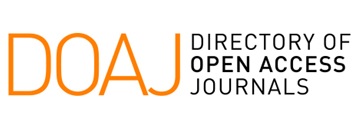CREATIVE LANGUAGE USE IN THE MOTHER TONGUE: A CASE STUDY OF A FOUR-YEAR-OLD INDONESIAN CHILD IN THE FAMILY SETTING
Abstract
Language acquisition is the process of acquiring the mother tongue, beginning with crying, cooing, and babbling, and eventually progressing to speaking. Between the ages of two and four, children demonstrate a noticeable development of language creativity. This study aims to provide example of the evidence of language creativity of a four year old Indonesian child. This research is a qualitative method with case study approach. The subject of this research is a four year old Indonesia child. The data were collected through observation and note-taking, and then analysed descriptively to draw conclusions.The result of the observation in this study revealed 17 utterances that serve as evidence of the child’s language creativity. The result of this study can be concluded that childish creativity in language acquisition is a kind of speaking ability of a child for overcoming his/her limitation for words they still do not have to describe new things then, he made the mistake when he independently try to use his language. As for the creative use of language, based on the data of this research, it can be caused by the child’ syntactical problem: misuse of adjective to make adverb, time concept confusion, semantical problems: failure to combine nouns with correct adjectives to make the opposition of particular words and morphological problems :the use of suffix for words to form verbs, which are caused the absence of dictions to describe new things but his intended meanings can be easily understood. It also happened because of generalization made by the child in order to overcome his limitation in speaking result in improper word selection.
Keywords
Full Text:
PDFReferences
Atance, Christina. (2015). Young Children’s
Thinking About the Future. Child
Development Perspectives, 9(3),
–182. doi:10.1111/cdep.12128
Barner, David ., & Snedeker, Jesse.
(2008). Compositionality and Statistics in Adjective Acquisition: 4-Year-Olds Interpret Tall and Short Based on the Size Distributions of Novel Noun Referents. , 79(3), 594–608. doi:10.1111/j.1467-8624.2008.01145.x
Chaer, Abdul. (2009). Psikolinguistik:kajian
teoritik.Jakarta: Rineka Cipta
Collier, Virginia. (1987). Age and Rate of
Acquisition of Second Language for
Academic Purposes. TESOL
Quarterly, 21(4), 617-641, ISSN 0039-8322, https://doi.org/10.2307/3586986
Dardjiwidjojo, Soenjono. (2018). Echa: kisah pemerolehan Bahasa anak Indonesia. Jakarta: Grasindo PT. Gramesia Widiasarana Indonesia
Eve V. Clark (2004). How language
acquisition builds on cognitive
development. , 8(10), 0–478.
doi:10.1016/j.tics.2004.08.012 from
https://scihub.hkvisa.net/10.1016/j.tics.2004.08.012#
Herman, Louis M. (2018). Encyclopedia of
Marine Mammals || Language Learning and Cognitive Skills. , (), 545–550. doi:10.1016/B978-0-12-804327-1.00011-X
Iskandarwassid, & Sunendar,Dadang .
(2008). Strategi pembelajaran
bahasa. Jakarta,Indonesia.Rosda
KBBI. (2021). Derived from
https://kbbi.co.id/
Kidd, Evan., Donnelly, Seamus ., &
Christiansen, Morthen. H.
(2018). Individual Differences in Language Acquisition and Processing. Trends in Cognitive Sciences, 22(2), 154–169. doi:10.1016/j.tics.2017.11.006
Mukalel, Joseph .C. (2003). Psychology of
language learning.Darya Ganj, New Delhi : Arora Offset Press
Roger Ratcliff; Jessica Love; Clarissa A.
Thompson; John E. Opfer (2012). Children Are Not Like Older Adults: A Diffusion Model Analysis of Developmental Changes in Speeded Responses. , 83(1), 367–381. doi:10.1111/j.1467-
2011.01683.x
Sandhofer, Catherine .M. (2004). Perceptual
complexity and form class cues in novel word extension tasks: How 4-year-old children interpret adjectives and count nouns. Developmental Science, 7(3), 378-388, ISSN 1363-755X, https://doi.org/10.1111/j.1467-7687.2004.00354.x
Waxman, Sandra . (1990). Nouns Mark Category Relations: Toddlers' and Preschoolers' Word?Learning Biases. Child Development, 61(5), 1461-1473, ISSN 0009-3920, https://doi.org/10.1111/j.1467-8624.1990.tb02875.x
Wellwood, Alexis., Gagliardi, Annie., &
Lidz, Jeffrey. (2016). Syntactic and
Lexical Inference in the Acquisition
of Novel Superlatives. Language
Learning and Development, 12(3),
doi:10.1080/15475441.201
1052878
Zhang, Meng. (2018). Children's
understanding of yesterday and
tomorrow. Journal of Experimental Child Psychology, 170, 107-133, ISSN 0022-0965, https://doi.org/10.1016/j.jecp.2018.01.010
DOI: https://doi.org/10.32502/ecj.v9i1.10246
Refbacks
- There are currently no refbacks.
Copyright (c) 2025 English Community Journal
The Departement of English Education, Faculty of Teacher Training and Education, Universitas Muhammadiyah Palembang
Jl. Jenderal A. Yani 13 Ulu, Seberang Ulu II, Palembang (30263), Indonesia.
Indexed by :
English Community Journal has been listed in :

English Community Journal by http://jurnal.um-palembang.ac.id/index.php/englishcommunity is licensed under a Creative Commons Attribution-ShareAlike 4.0 International License.







